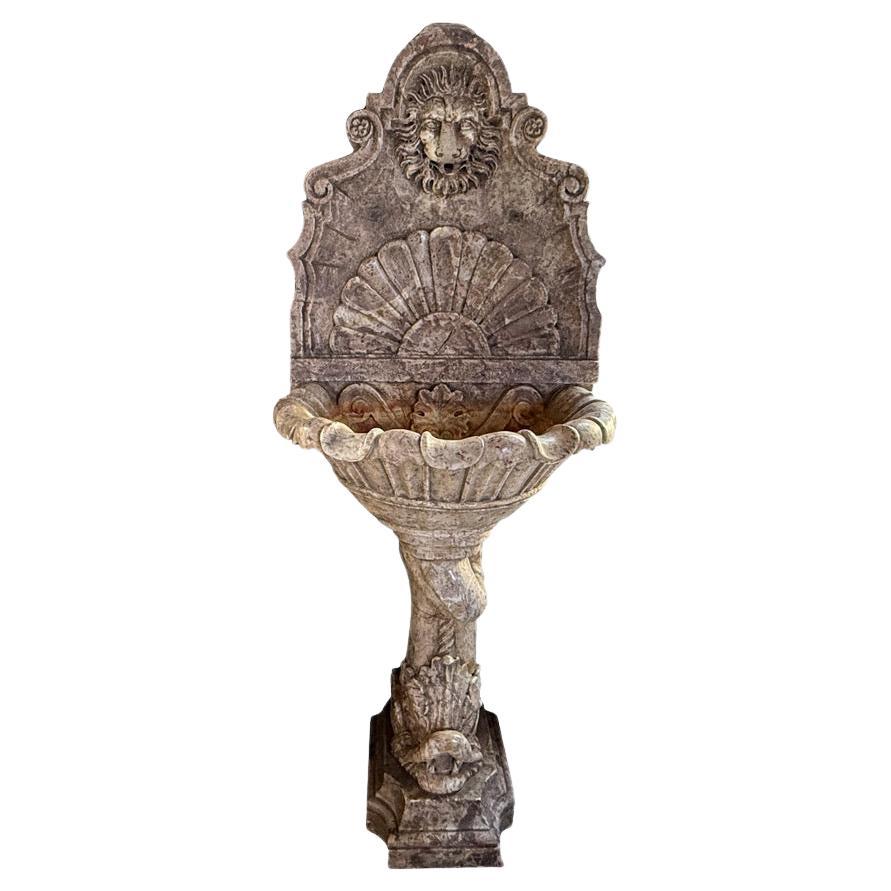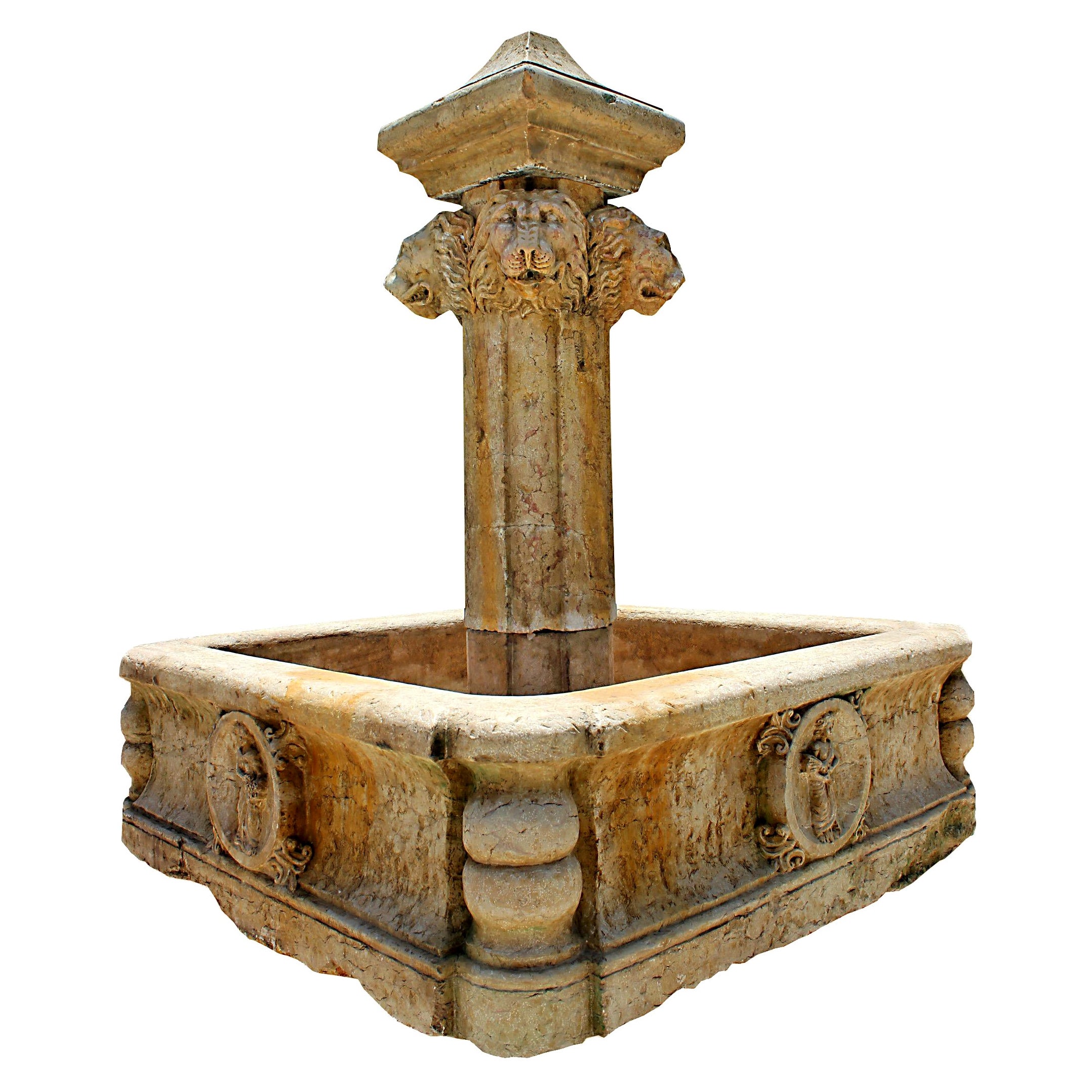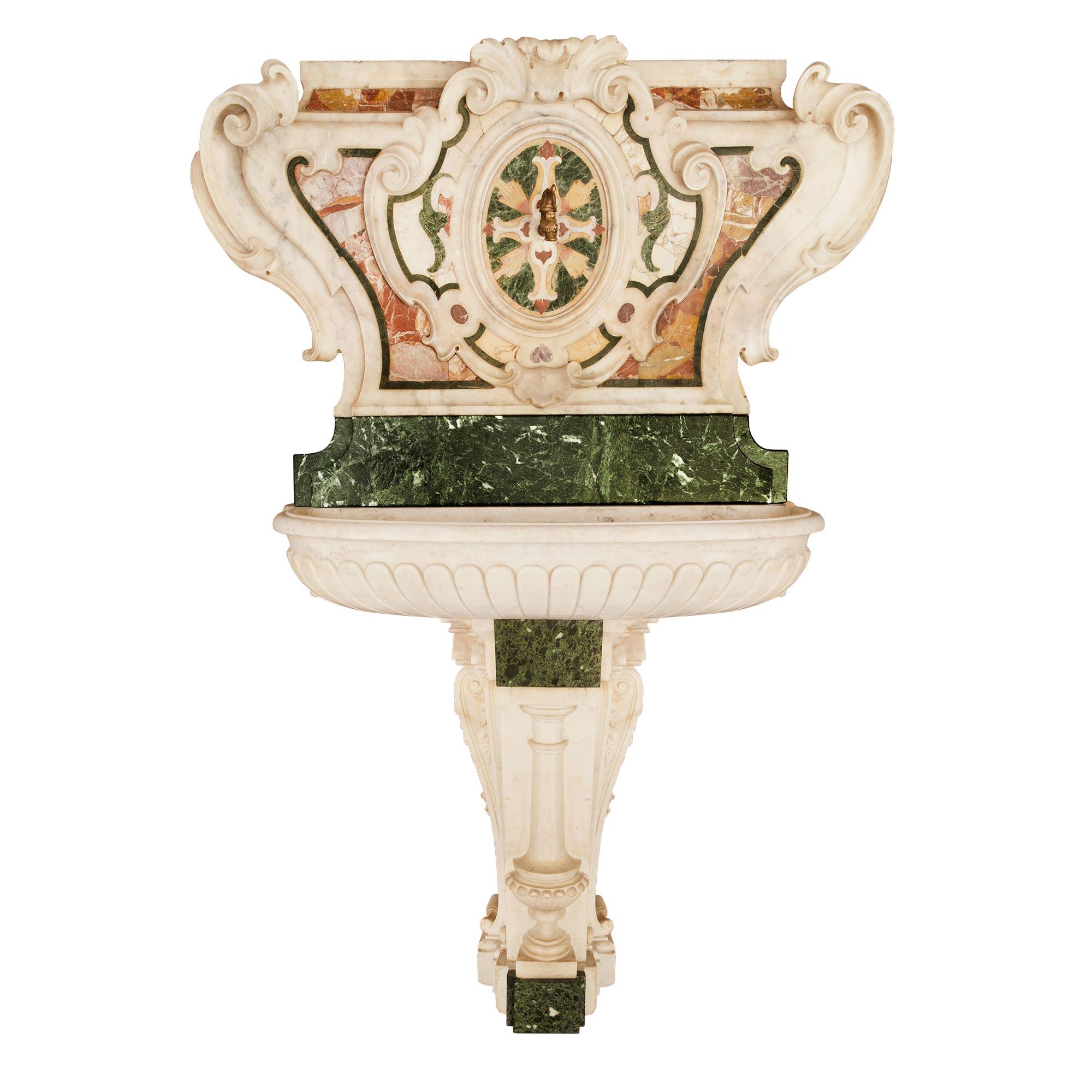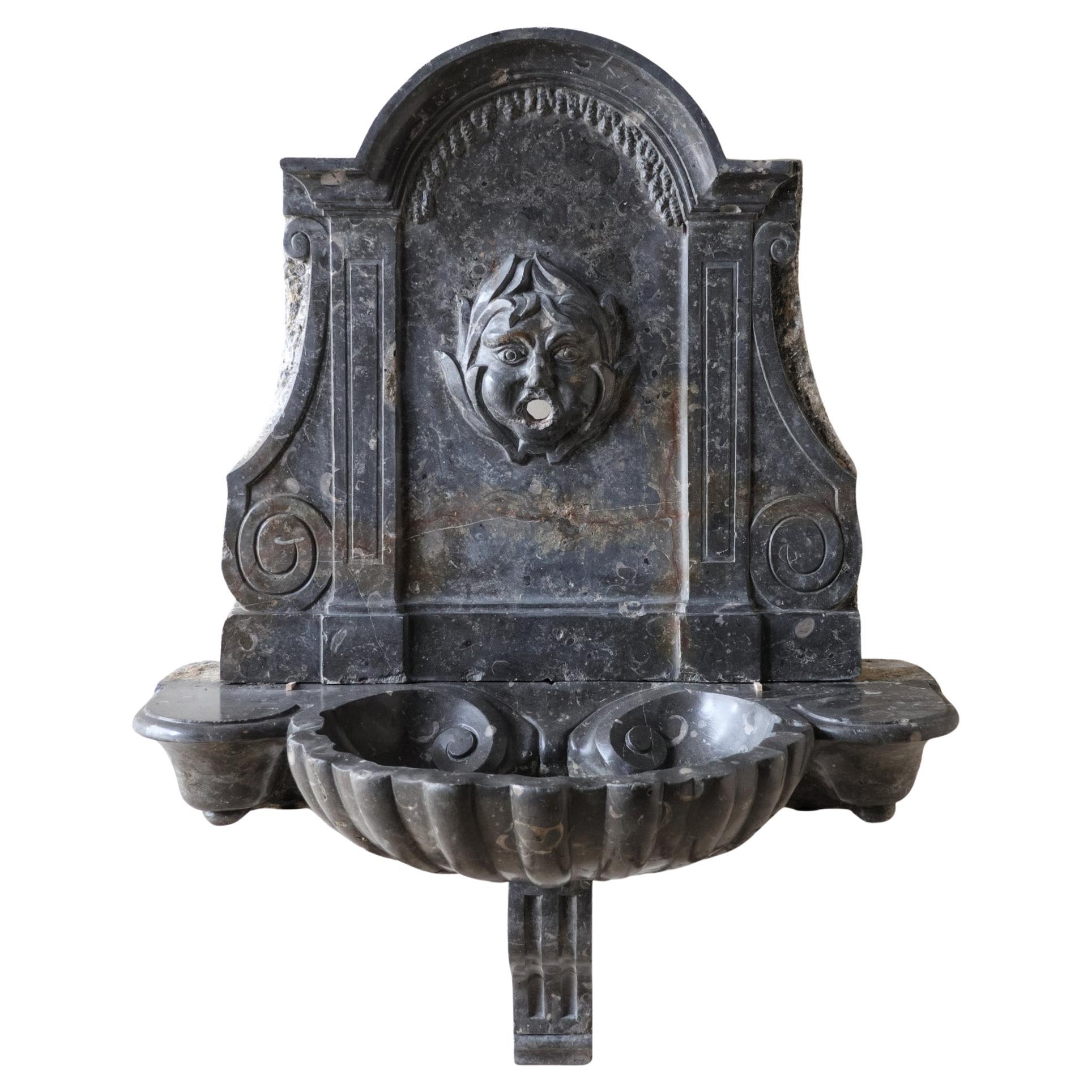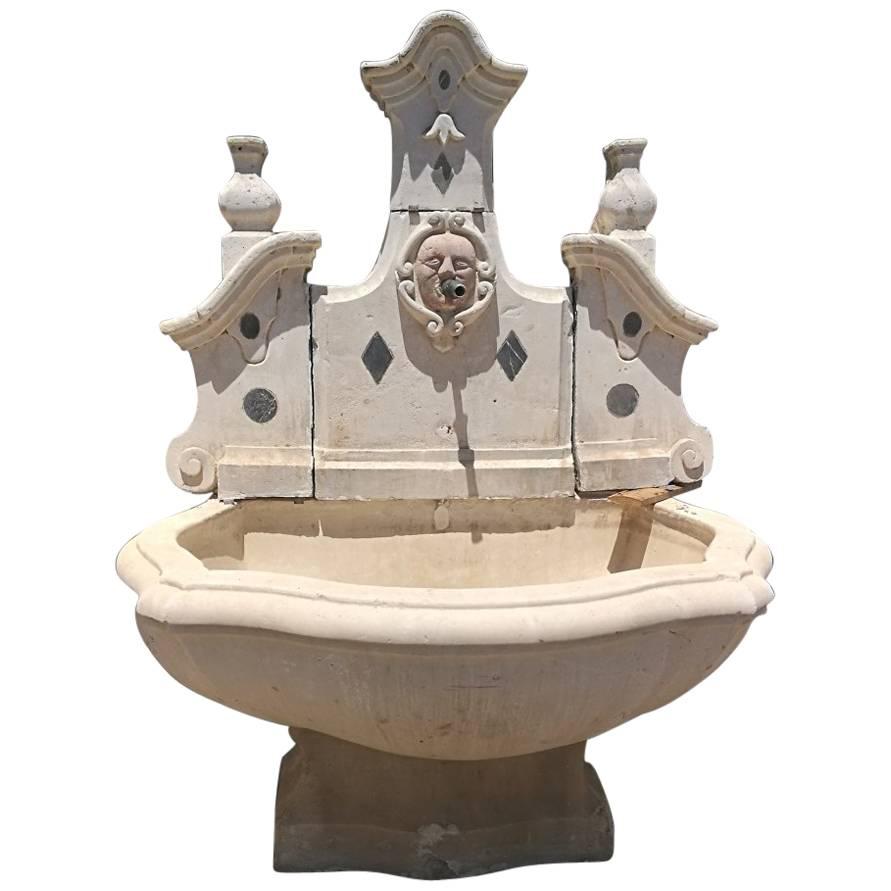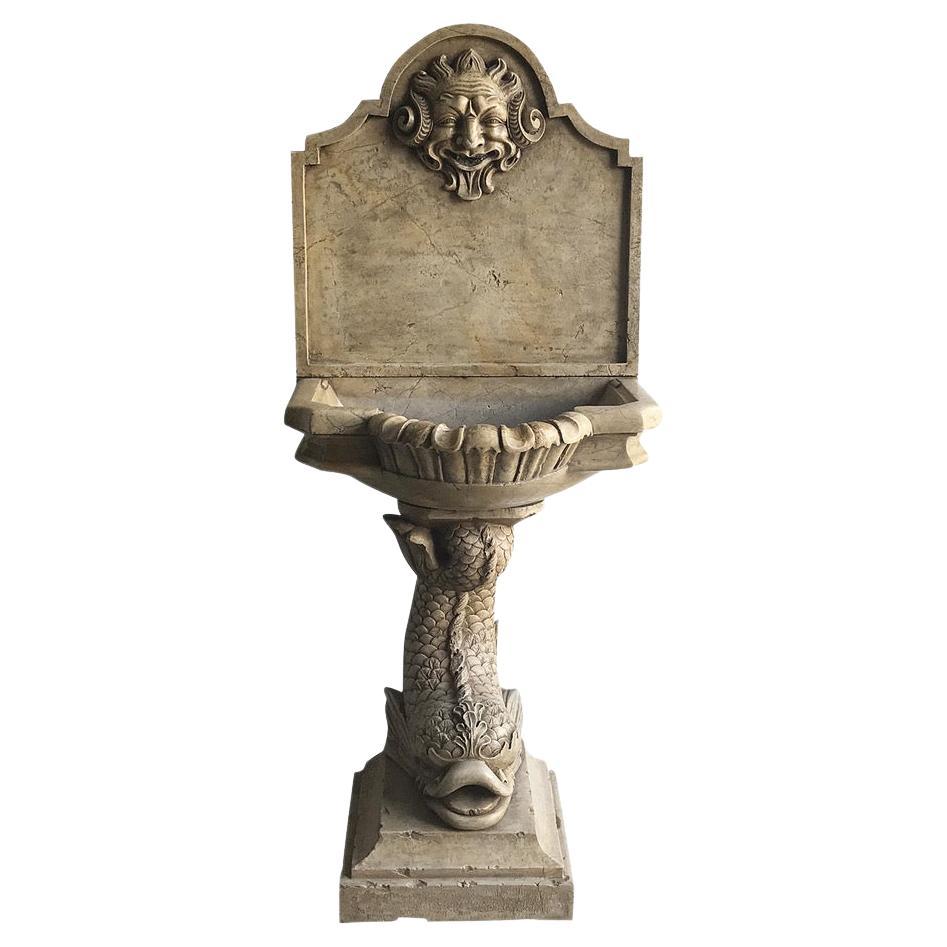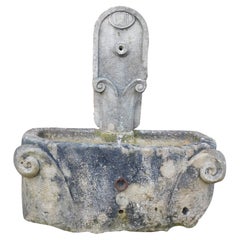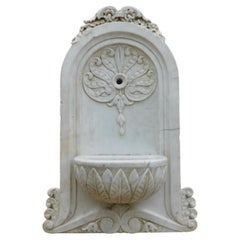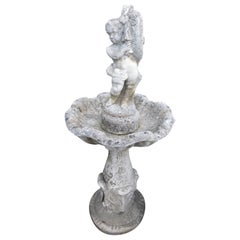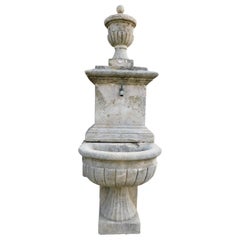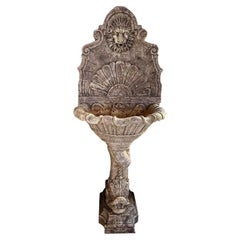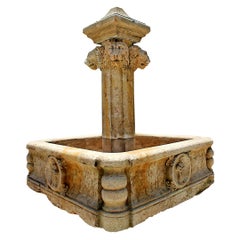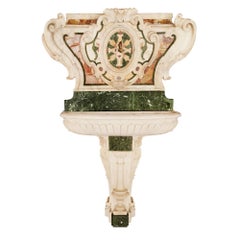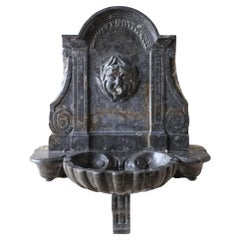Items Similar to Ancient Fountain in Carved and Inlaid Marble, 16th/17th Century, from Sicily
Want more images or videos?
Request additional images or videos from the seller
1 of 8
Ancient Fountain in Carved and Inlaid Marble, 16th/17th Century, from Sicily
$19,147.24
$23,934.0520% Off
£14,223.20
£17,779.0120% Off
€16,000
€20,00020% Off
CA$26,414.96
CA$33,018.7020% Off
A$29,037.31
A$36,296.6420% Off
CHF 15,260.68
CHF 19,075.8520% Off
MX$352,618.72
MX$440,773.4020% Off
NOK 190,373.14
NOK 237,966.4220% Off
SEK 180,365.16
SEK 225,456.4520% Off
DKK 121,800.29
DKK 152,250.3620% Off
About the Item
Antiques fountain in white marble, richly carved and inlaid with "royal yellow" marble in the pedestal and in the basin, upper part with mythological sculpture. Of great stage presence but also very refined. Perfect for indoor or outdoor installations, it can be used as a sink or as a fountain. Recovered from an ancient noble house in Sicily, 5/600th century.
Measurements in cm W 100 x H 185 x D 75.
About the Seller
4.9
Vetted Professional Seller
Every seller passes strict standards for authenticity and reliability
Established in 1988
1stDibs seller since 2014
173 sales on 1stDibs
Typical response time: 10 hours
- ShippingRetrieving quote...Shipping from: cervasca, Italy
- Return Policy
Authenticity Guarantee
In the unlikely event there’s an issue with an item’s authenticity, contact us within 1 year for a full refund. DetailsMoney-Back Guarantee
If your item is not as described, is damaged in transit, or does not arrive, contact us within 7 days for a full refund. Details24-Hour Cancellation
You have a 24-hour grace period in which to reconsider your purchase, with no questions asked.Vetted Professional Sellers
Our world-class sellers must adhere to strict standards for service and quality, maintaining the integrity of our listings.Price-Match Guarantee
If you find that a seller listed the same item for a lower price elsewhere, we’ll match it.Trusted Global Delivery
Our best-in-class carrier network provides specialized shipping options worldwide, including custom delivery.More From This Seller
View AllAntique Grey Stone Fountain, Hand-Carved, 18th Century, France
Located in Cuneo, Italy (CN)
Ancient fountain in gray stone, hand-carved with the name of the country it comes from, built entirely by hand in the late 18th century, from France....
Category
Antique Late 18th Century French Fountains
Materials
Stone
$5,265 Sale Price
20% Off
Wall fountain in white Carrara marble, carved with leaf decorations, Italy
Located in Cuneo, Italy (CN)
Ancient old wall fountain, fountain in white Carrara marble, richly carved with leafy decorations and hole for water nozzle, built in Italy in the 19th century, Maximum dimensions cm...
Category
Antique 19th Century Italian Fountains
Materials
Carrara Marble
stone garden fountain with carved putto, Italy
Located in Cuneo, Italy (CN)
Vintage garden fountain, in artificial stone or concrete, carved with putto, basin and pedestal, built in the 1900s in Italy
tub circumference measures 60 cm x H 135, base 40 cm
Category
20th Century Italian Fountains
Materials
Concrete
$3,637 Sale Price
20% Off
Fountain in gray stone, with spout and applied to the wall, Italy
Located in Cuneo, Italy (CN)
Ancient and important wall fountain, richly carved in gray stone, with iron filler, ashlar basin and wall pillar, built for a garden in Italy, in the 19th century, from southern Ital...
Category
Antique 19th Century Italian Fountains
Materials
Stone
$7,180 Sale Price
20% Off
Carved marble sink basin, corner, Italy
Located in Cuneo, Italy (CN)
Ancient small bathtub, washbasin in white Carrara marble, hand-sculpted with shells, built to be placed in a corner, built in Italy in the 19th century, cm w 70 x H 14 x D 54
Category
Antique Late 19th Century Italian Stone Sinks
Materials
Carrara Marble
Antique Vicenza Stone Well with Sculptures of Cherubs and Festoons
Located in Cuneo, Italy (CN)
Ancient circular well, in ancient Vicenza stone, with handmade sculptures of cherubs, festoons and decorations of the time, handmade in Northern Italy, for the garden of a noble pala...
Category
20th Century Italian Garden Ornaments
Materials
Stone
You May Also Like
Pre 19th Century Italian Antique Wall Marble Fountain - Antique Fontana Delfino
Located in West Palm Beach, FL
A marble wall fountain with dolphin pedestal. The Campana shaped body of the basin is supported by the dauphin grotesque pedestal which is placed on a raised square foot. The fountai...
Category
Antique Late 18th Century Italian Renaissance Fountains
Materials
Marble
17th-18th Century Italian Medieval St. Rosso Verona Carved Marble Fountain
Located in West Palm Beach, FL
An extraordinary 17/18th century Italian large scale Medieval st. square Rosso Verona marble hand carved fountain. The fountain with its grand scale one piece basin has a mottled bas...
Category
Antique 18th Century Italian Medieval Fountains
Materials
Marble
Italian 18th Century Baroque Period Marble Fountain
Located in West Palm Beach, FL
A most impressive and extremely decorative Italian 18th-century Baroque period marble fountain. The marble fountain is raised by a white Carrara marble and Vert De Patricia marble ba...
Category
Antique 18th Century Italian Baroque Fountains
Materials
Marble
Large Hand-hewn St. Cyr Marble Wall Fountain from the 18th Century
Located in Baambrugge, NL
Exquisite, rare, hand-hewn St. Cyr marble wall fountain from the 18th century. This remarkable piece features a spout intricately crafted in the shape of a river god, cascading water...
Category
Antique 18th Century French Fountains
Materials
Marble
18th Century Stone and Marble Cordovan Wall Fountain
Located in Marbella, ES
Cordovan wall fountain of the 18th century made of stone, with marble incristations making shapes of rhombuses and circles, with a marble mask of reddish v...
Category
Antique Mid-18th Century Italian Fountains
Materials
Stone, Marble
19th Century Italian Antique Marble Wall Fountain
Located in West Palm Beach, FL
An antique Breccia marble wall fountain. The scalloped water basin is supported by a dolphin sitting on a square base. The backsplash has a very detailed carved mask as the spout. Mi...
Category
Antique 19th Century Italian Fountains
Materials
Marble
More Ways To Browse
Pedestal Basin
Antique Marble Fountain
Garden Limestone Wall Fountains
Large Antique Fountain
Garden Spout
Antique Spout
Dolphin Patio
Mid Century Bronze Garden Fountain
Antique Iron Fountain
Metal Basin
Stone Fountain Basin
Pedestal Basin
Wall Fountain Italy
Cast Iron Fountains
Dolphin Fountain
Cast Bronze Fountain
Antique Lavabo
French Spout
